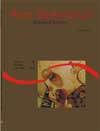<b>Stock and recruitment relationship for <em>Serrasalmus marginatus</em> (Valenciennes, 1847) and <em>S. maculates</em> (Kner, 1860) piranhas in Baía River, Upper Paraná River</b> - DOI: 10.4025/actascibiolsci.v26i3.1544
Abstract
The most important and, usually, the most difficult problem in fisheries sciences assessment is the relationship between stock and recruitment. The term ‘recruitment’ is referred in this study as the abundance of the earliest age at which a cohort can effectively be estimated. The process of recruitment is complex, and determined by density-dependent and density-independent factors. Usually, stock-recruitment is the empirical relationship between reproductive stock and the number of recruits produced. There are several suggestions to express the stock-recruitment relationship, and an example of such attempts is the models of Beverton and Holt, Ricker and Shepherd. These models were fitted by non-linear procedure to Serrasalmus marginatus and S. maculates populations from the Baía River. The aim of the study was to determine the best model for stock-recruitment relationship and the main mechanism related to it for both species. Competition appeared to be the limiting factor for recruitment. Shepherd (S. marginatus) and Ricker (S. maculates) were the models that presented the best fitDownloads
Download data is not yet available.
Published
2008-04-01
How to Cite
Alexandre, P. C., Luiz, E. A., Piana, P. A., Gomes, L. C., & Agostinho, A. A. (2008). <b>Stock and recruitment relationship for <em>Serrasalmus marginatus</em> (Valenciennes, 1847) and <em>S. maculates</em> (Kner, 1860) piranhas in Baía River, Upper Paraná River</b> - DOI: 10.4025/actascibiolsci.v26i3.1544. Acta Scientiarum. Biological Sciences, 26(3), 303-307. https://doi.org/10.4025/actascibiolsci.v26i3.1544
Issue
Section
Biology Sciences
DECLARATION OF ORIGINALITY AND COPYRIGHTS
I Declare that current article is original and has not been submitted for publication, in part or in whole, to any other national or international journal.
The copyrights belong exclusively to the authors. Published content is licensed under Creative Commons Attribution 4.0 (CC BY 4.0) guidelines, which allows sharing (copy and distribution of the material in any medium or format) and adaptation (remix, transform, and build upon the material) for any purpose, even commercially, under the terms of attribution.
Read this link for further information on how to use CC BY 4.0 properly.
0.6
2019CiteScore
31st percentile
Powered by 

0.6
2019CiteScore
31st percentile
Powered by 











1.png)




3.png)













